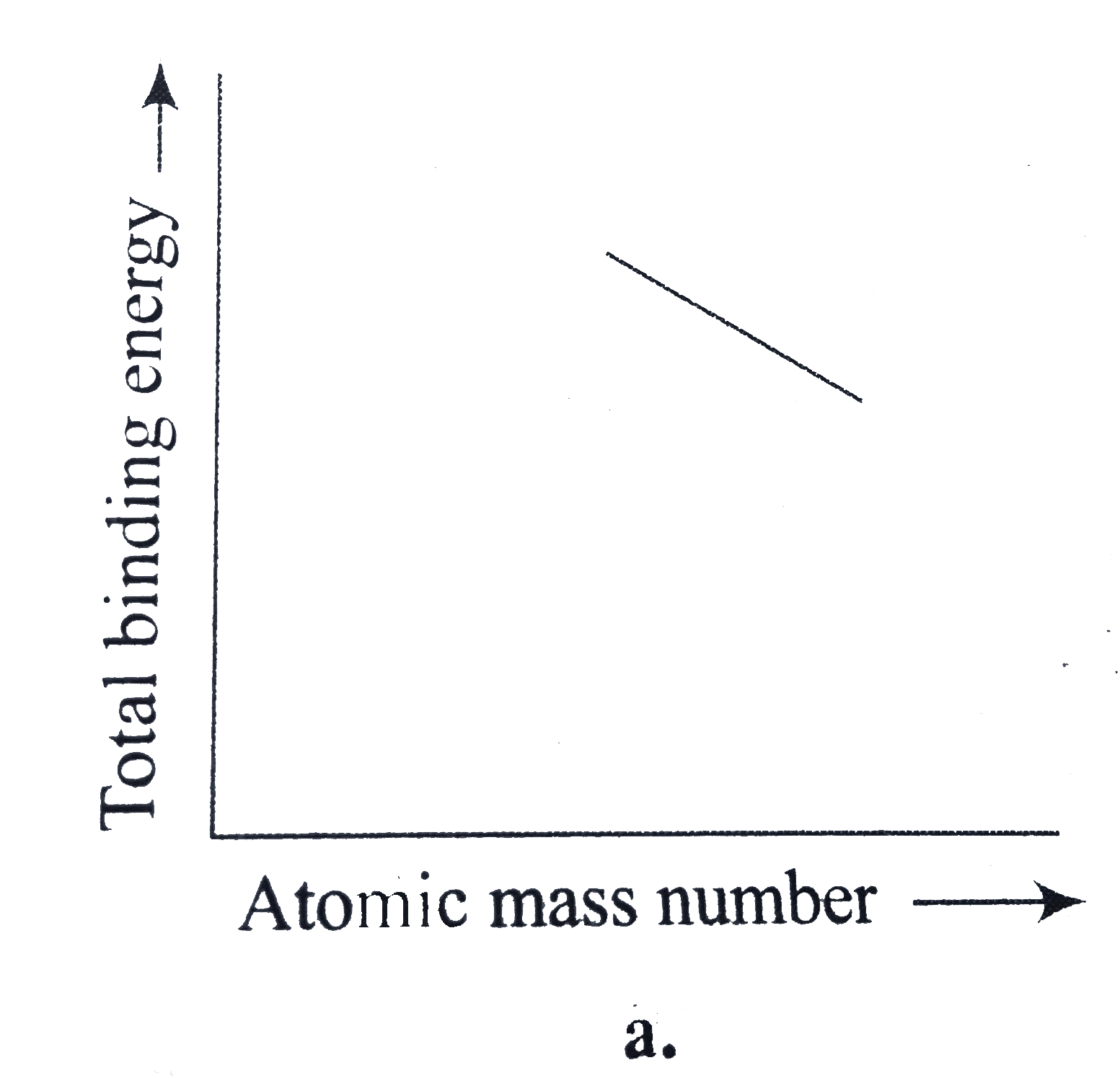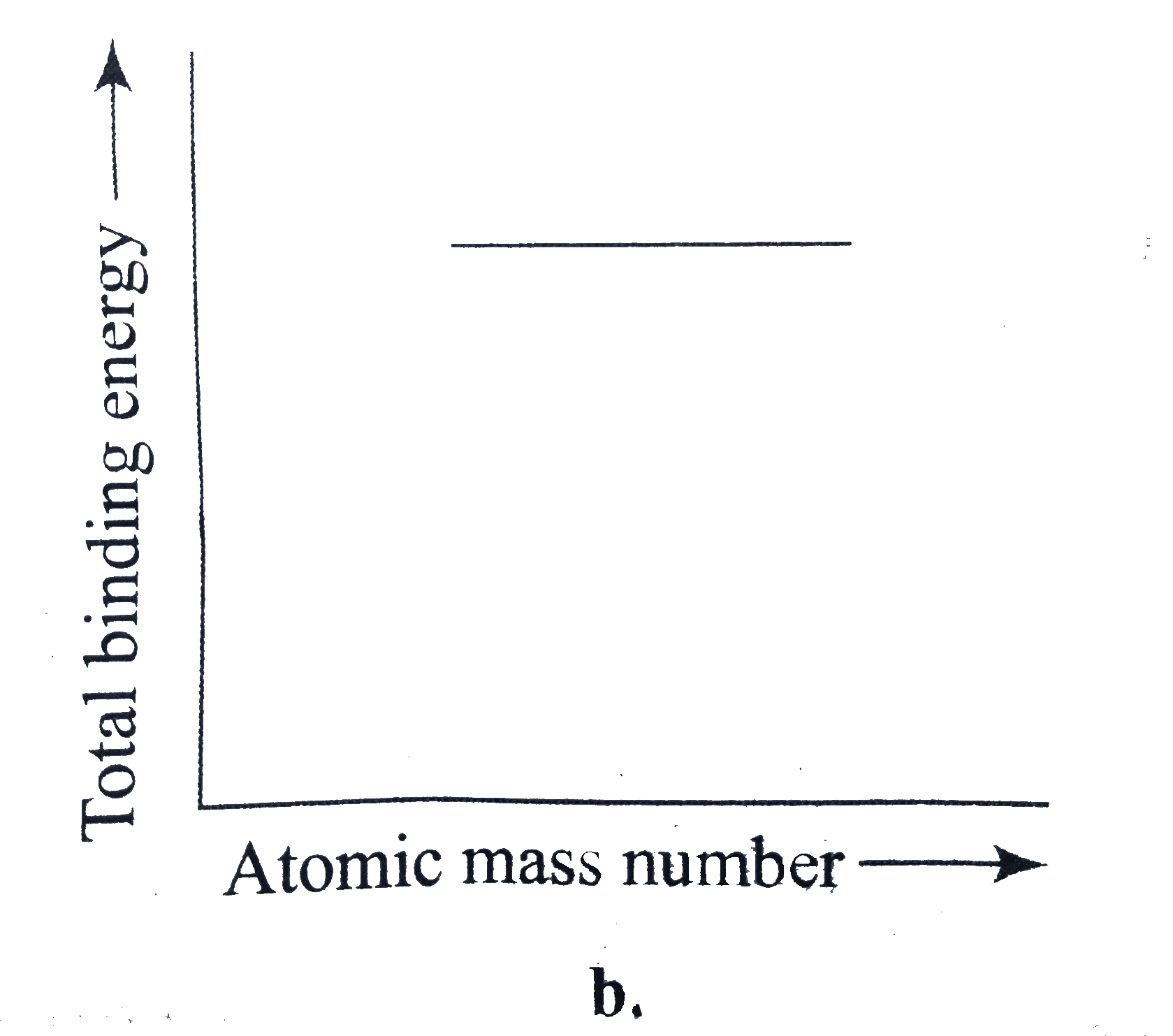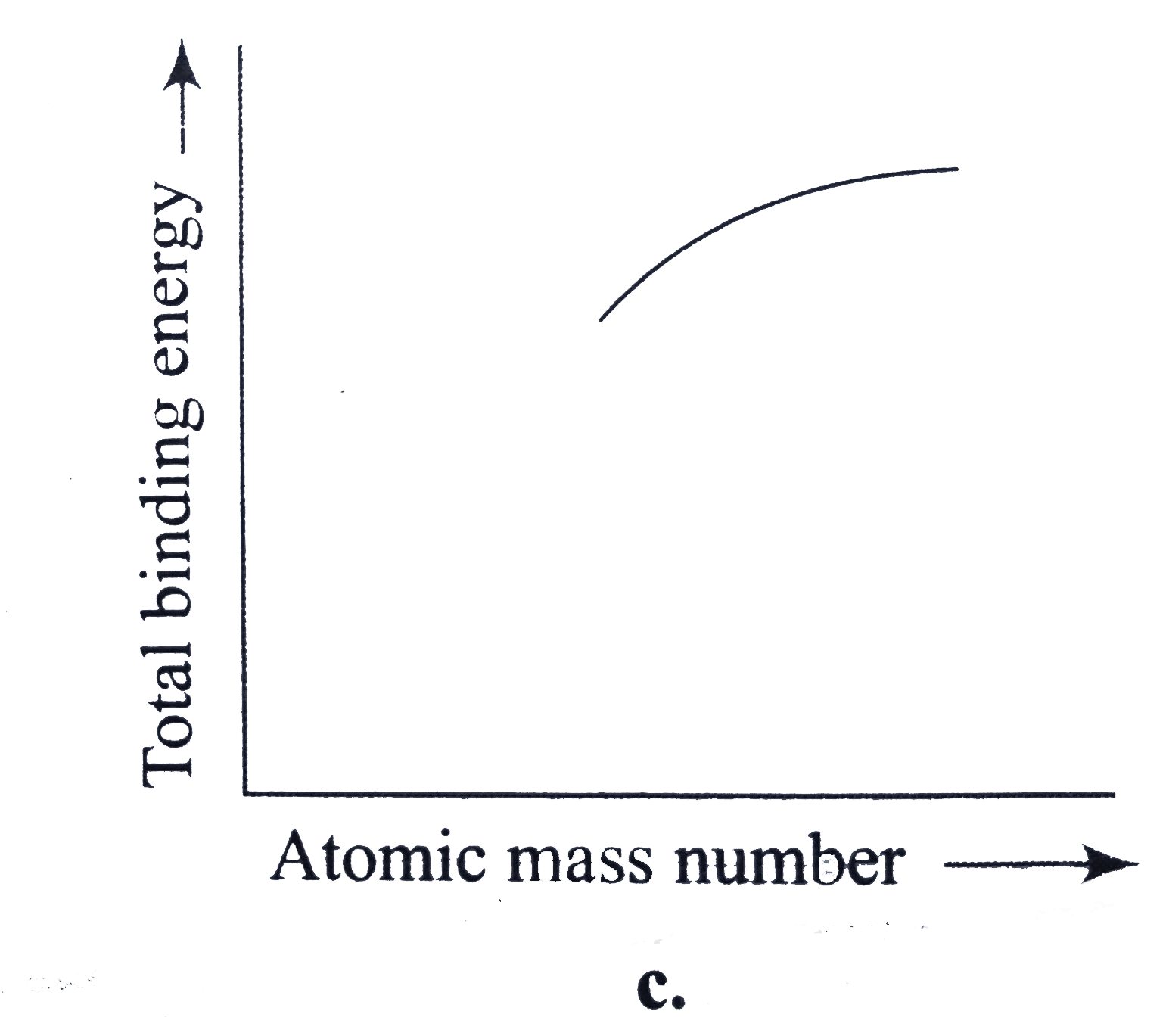Nuclear Binding Energy
NA
Topper's Solved these Questions
Similar Questions
A : Exothermic reactions are possible when two light nuclei fuse or when a heavy nucleus undergoes fission into intermediate mass nuclei.
R: The nature of nuclear binding energy curve is such that it rises lighter nuclei and slightly decreasing for heavier nuclei.
View SolutionNuclear Physics||Nucleus and Binding Energy
View Solution
Knowledge Check
The compound unstabel nucleus .23692U often decays in accordance with the following reaction
.23692U→.14054Xe+.9438Sr + other particles
During the reaction, the uranium nucleus ''fissions'' (splits) into the two smaller nuceli have higher nuclear binding energy per nucleon (although the lighter nuclei have lower total nuclear binding energies, because they contain fewer nucleons).
Inside a nucleus, the nucleons (protonsa and neutrons)attract each other with a ''strong nuclear'' force. All neutrons exert approxiamtely the same strong nuclear force on each other. This force holds the nuclear are very close together at intranuclear distances.
Which of the following graphs might represent the relationship between atomic number (i.e., ''atomic weight'') and the total binding energy of the nucleus, for nuclei heavier than .9438Sr ?A B
B C
C D
D
The compound unstabel nucleus .23692U often decays in accordance with the following reaction
_(92)236U→.14054Xe+_(38)^(94)Sr + other particles
During the reaction, the uranium nucleus ''fissions'' (splits) into the two smaller nuceli have higher nuclear binding energy per nucleon (although the lighter nuclei have lower total nuclear binding energies, because they contain fewer nucleons).
Inside a nucleus, the nucleons (protonsa and neutrons)attract each other with a ''strong nuclear'' force. All neutrons exert approxiamtely the same strong nuclear force on each other. This force holds the nuclear are very close together at intranuclear distances.
In the nuclear reaction presented above, the ''otter particles'' might be .AAn alpha particle, which consists of two protons and two neutronsBtwo protonsCone proton and one neutronDtwo neutronsThe compound unstabel nucleus .23692U often decays in accordance with the following reaction
.23692U→.14054Xe+.9438Sr + other particles
During the reaction, the uranium nucleus ''fissions'' (splits) into the two smaller nuceli have higher nuclear binding energy per nucleon (although the lighter nuclei have lower total nuclear binding energies, because they contain fewer nucleons).
Inside a nucleus, the nucleons (protonsa and neutrons)attract each other with a ''strong nuclear'' force. All neutrons exert approxiamtely the same strong nuclear force on each other. This force holds the nuclear are very close together at intranuclear distances.
A proton and a neutron are both shot at 100ms−1 toward a .126C nuleus. Which partilce, if either, is more likely to be absorebed by the nucleus?AThe protonBThe neutronCBoth particles are about equally likely to be absorbed,.DNeither particle will be absorbed.
Magic Numbers || Even Odd Rule || Binding Energy || Calculation of Binding Energy || Nuclear Fission and Fusion
View SolutionQ Value in Terms OF Mass|| Binding Energy||Kinetic Energy|| Binding Energy Per Nucleon and Stability|| Nuclear Fusion and Fission|| Alpha-decay
View Solutionnuclear physics 1 Properties of nucleus and its classification| Binding energy|Binding energy per nucleon
View SolutionThe compound unstabel nucleus .23692U often decays in accordance with the following reaction
.23692U→.14054Xe+.9438Sr + other particles
During the reaction, the uranium nucleus ''fissions'' (splits) into the two smaller nuceli have higher nuclear binding energy per nucleon (although the lighter nuclei have lower total nuclear binding energies, because they contain fewer nucleons).
Inside a nucleus, the nucleons (protonsa and neutrons)attract each other with a ''strong nuclear'' force. All neutrons exert approxiamtely the same strong nuclear force on each other. This force holds the nuclear are very close together at intranuclear distances.
Why is a .42He nucleus more stable than a .43Li nulceus?
View SolutionThe nuclear binding energies of the elements P and Q are EP and EQ respectively. Three nuclei of elements Q fuse to form one nucleus of element P. In this process the energy released is 'e'. The correct relation between EP,EQ and e will be
View Solution
